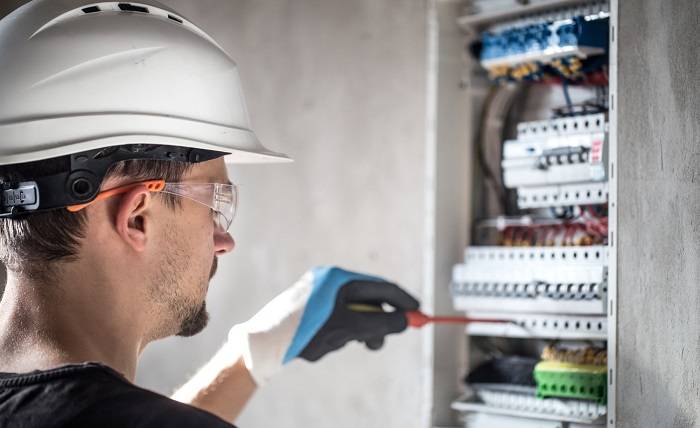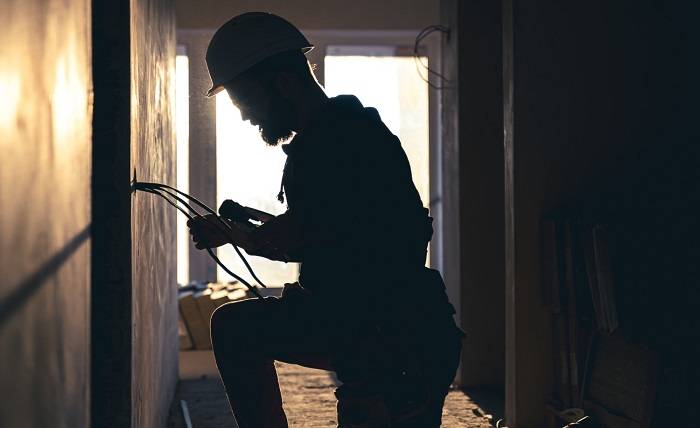Renovating your home is an exciting project, but when it comes to electrical work, safety and efficiency must be the top priorities. Whether you’re updating old wiring, adding new outlets, or installing modern lighting, handling electrical tasks correctly ensures your home remains safe and functional. Here are essential tips to guide you through electrical work during your renovation, helping you avoid hazards and get the most out of your investment.
1. Plan Your Electrical Needs Early
One of the most important steps in any renovation is careful planning—especially for electrical work. Assess your current and future needs to determine how many outlets, switches, and lighting fixtures you require. Consider your lifestyle, the devices you use, and any plans for home automation or energy-efficient upgrades.
Creating a detailed electrical plan will help prevent costly changes later. It also allows your electrician to estimate the materials and time required accurately. Don’t forget to think about convenience—place outlets where you’ll need them, like near workspaces, entertainment areas, and charging stations.
2. Always Use a Licensed Electrician

While DIY projects are tempting, electrical work is not something to take lightly. Improper installations can cause electrical fires, shocks, or damage to appliances. That’s why it’s always best to hire an electrician who understands the complexities of residential systems and follows strict safety protocols. Hiring a licensed and experienced electrician ensures that the work complies with local building codes and safety standards.
A professional electrician will also conduct a thorough inspection of your existing wiring to identify potential issues such as outdated components, faulty grounding, or overloaded circuits. They will recommend the best solutions tailored to your renovation, saving you headaches down the line.
3. Prioritize Safety First
Electrical work involves inherent risks, so safety must always come first. If you’re handling any minor tasks yourself—like changing light fixtures or replacing switches—make sure to turn off the power at the circuit breaker and verify it’s off using a voltage tester.
Avoid overloading circuits by spreading out electrical loads evenly across your home’s wiring. Using too many high-powered devices on a single circuit can cause breakers to trip or wires to overheat.
Additionally, make sure all electrical boxes, outlets, and switches are properly grounded. Grounding helps prevent electrical shock and protects your devices from power surges.
4. Upgrade Old Wiring and Panels
Many older homes still have outdated electrical systems that may not meet today’s power demands. During a renovation, take the opportunity to upgrade old wiring, circuit breakers, and electrical panels. This not only improves safety but also enhances the efficiency of your home’s electrical system.
Upgrading to modern wiring materials and higher-capacity panels ensures your home can handle energy-hungry appliances and smart home technologies without risking overloads. Your electrician can advise if your home needs a full panel upgrade or just partial rewiring.
5. Use Energy-Efficient Fixtures and Devices
Incorporating energy-efficient electrical components during renovations is both eco-friendly and cost-effective. Replace incandescent bulbs with LED lighting, which uses up to 80% less energy and lasts much longer.
Consider installing dimmer switches, motion sensors, or smart home systems that allow you to control lighting and appliances remotely. These upgrades not only reduce your electricity bills but also increase convenience and home value.
Energy-efficient appliances and devices also reduce the load on your electrical system, helping to prevent issues caused by excessive power consumption.
6. Plan for Future Technology
Electrical renovations are an excellent chance to future-proof your home. Think about adding extra conduit or wiring for future technologies, such as home automation, solar panels, or electric vehicle (EV) charging stations.
Running additional cables or installing larger panels now may cost a bit more upfront but will save significant time and money if you decide to add these features later. Your electrician can help design a system that accommodates future upgrades without major disruptions.
7. Ensure Proper Permits and Inspections
Most regions require permits for significant electrical work. Obtaining the necessary permits ensures that your renovation follows safety codes and building regulations. It also means the work will be inspected by professionals, providing peace of mind.
Failing to get permits or inspections can result in fines, insurance issues, or complications when selling your home. Always check with your local building authority or your electrician to understand the requirements before starting any electrical renovation.
8. Label Your Electrical Panel Clearly
After completing electrical work, make sure your electrical panel is clearly labeled. Identifying which breaker controls each circuit saves time during emergencies and future renovations. Use durable labels and keep an updated diagram nearby.
Clear labeling improves safety by helping you quickly turn off the right circuit during maintenance or repairs.
Electrical work is a critical part of any home renovation that demands attention to detail, adherence to safety standards, and professional expertise. By planning ahead, hiring a licensed electrician, upgrading old systems, and incorporating energy-efficient and future-ready technologies, you can ensure your renovation is both safe and efficient.
Following these essential tips not only protects your home and loved ones but also adds lasting value and comfort to your living space. When it comes to electrical renovations, investing in quality work and proper planning always pays off.

